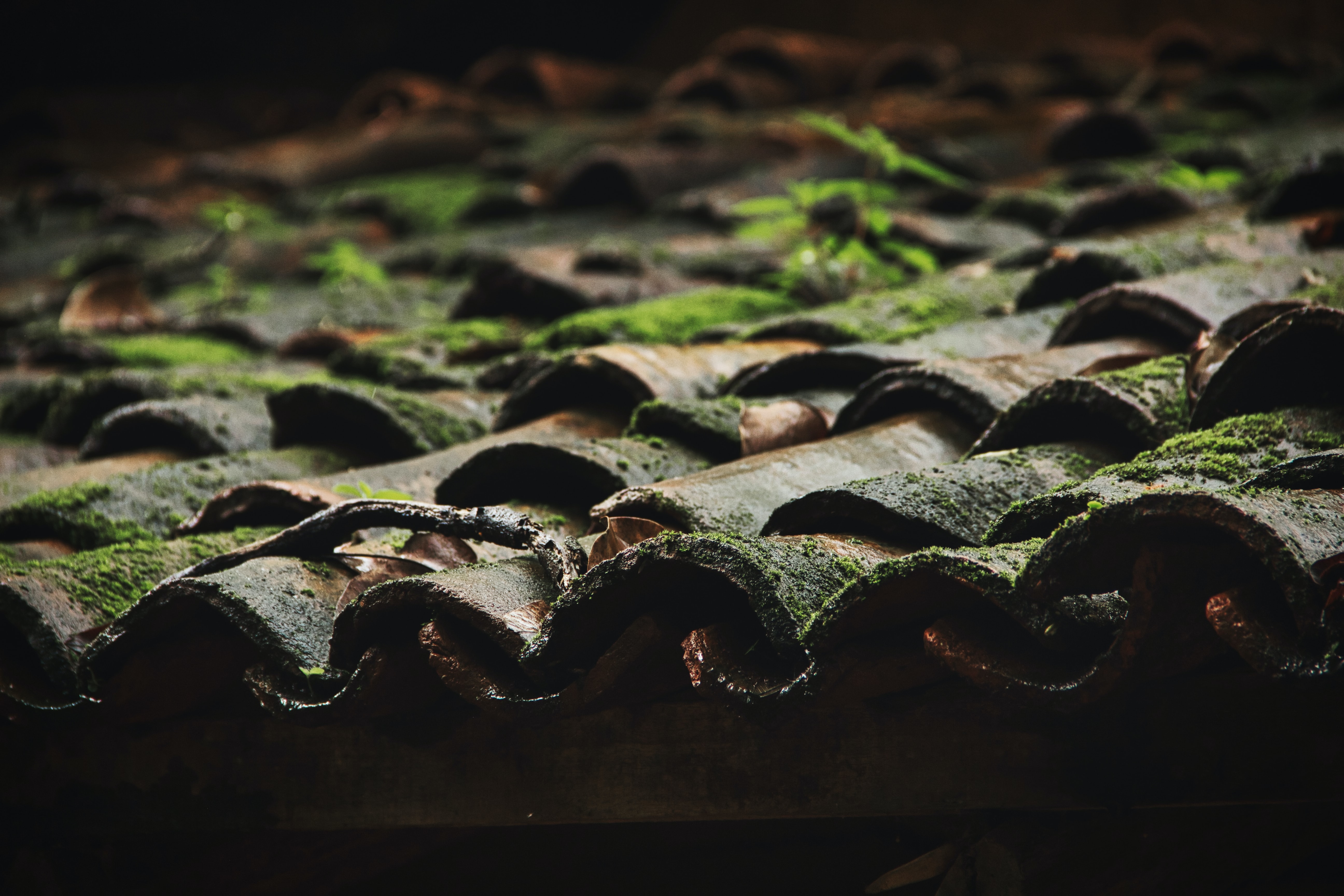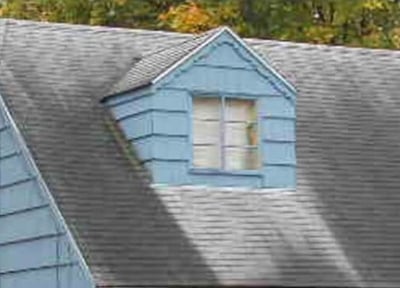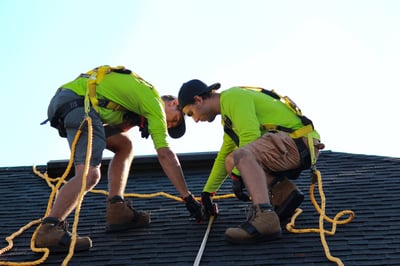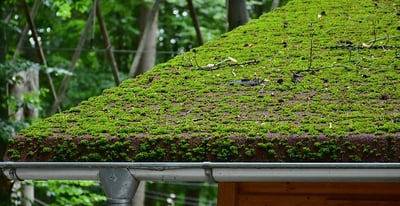
Mold and algae can sneak up in any place where moisture is abundant, and for us Floridians, sadly this can be pretty common. However, humid regions are not the only culprit for roof maintenance challenges. You could find mold around leaky pipes, refrigerators, wet basements, and even on your roof. Luckily, unlike the moldy cheese in your fridge, moldy roofs do not have to be thrown out!
With their slimy dark greenish hues, mold and algae can quickly take over your roof, causing your home's structural beauty to rot. Mold stains on roof shingles often make your roof look old and unkempt, with black streaks covering the once pristine condition, and while moldy roofs are more common in areas with warm, humid summers, the experts here at RoofCrafters know all too well that mold can thrive in any condition.
Understanding Roof Mold and Algae
The truth is you can’t do much about algae and mold spores from the air landing on your roof. When left untreated, though, the unsightly fungus can lead to the degradation of any roofing material. The most common roofing materials prone to mold and algae growth are wood and asphalt shingles, but metal, clay, and concrete tiles can also degrade due to mold over time.
 Black Algae on Asphalt Shingles
Black Algae on Asphalt Shingles
The bad news is that sometimes, no matter how hard you try, your roof could never be mold or algae-free. The good news is that with a little guidance and professional help, you can successfully remove common causes of mold from your roof. It's a good thing you're here because, in this article, we'll be breaking down mold and algae removal from your roof step by step.
Let's get started!
Safety First: Preparing for Roof Cleaning
Before you get started, put on a pair of thick rubber gloves, a breathing mask, and goggles for eye protection. Since you will be using chemicals to treat your moldy roof, they can irritate your eyes and airways. Therefore, it is important to prioritize safety and wear protective gear throughout the process. Similarly, protective clothing is also equally important. Wear a long-sleeved shirt and pants to keep your skin from coming into contact with bleach and other chemicals.

Donning a pair of slip-resistant work boots is also a good idea to have proper traction on the slippery, mold-covered shingles. Pro tip: if you're not comfortable with performing these tasks on your own, schedule an inspection with your local roofing contractor and learn what your options are for a professional roof cleaning.
Protecting Surroundings Before Roof Cleaning
The best way to remove mold from your shingles is by using a basic bleach solution. However, bleach can be toxic to nearby plants as well as harmful to your furniture in the yard. This is mainly because the bleach solution will run off of the roof and onto your property, damaging plants and leaving stains on your furniture below.

Therefore, you should cover plants, furniture, and other items in your yard with tarps or plastic sheeting. Covering your grass with tarps can also prevent the bleach from soaking into the soil. If you do not have the time or means to do this step, you can simply spray water onto the grass and plants to dilute the bleach solution when it runs off of the roof.
Effective Cleaning Techniques for Mold and Algae
The next step, if you're able to, carefully get on a ladder and hose off the treatment area with fresh water, spraying at a downward angle. The best mold removal strategies include a soft-bristle scrub brush and some algae cleaning solution. This will help remove the stuck-on mold and algae from the roof shingles.

Make sure to scrub from the top down to avoid lifting shingles. Also, make sure not to scrape or pound on the roof and work in small sections at a time to prevent yourself from breaking the shingles.
Preventive Measures to Avoid Future Growth
Using a powerful chemical agent like chlorine bleach is a great way to get rid of mold and other types of growth from your roof. All you have to do is mix one quart of bleach, one gallon of water, and ¼ cup (60ml) of trisodium phosphate (TSP). Now, disperse the cleaning solution on your roof by using a pump sprayer. The chlorine in the bleach will kill the mold-causing bacteria, while the TSP will remove mold stains and discoloration from the bleach.

Continue spraying your entire roof until you see runoff. Once the solution starts running off of the roof, let it sit for 15-20 minutes to allow it to soak in. Next, snake the garden hose around and up the ladder with you. Rinse the entire roof with fresh water to wash away the concentrated chemicals. It is important to note that chemicals can cause permanent damage or discoloration to the shingles if not properly rinsed.
Stay in Front of Future Mold Growth
Periodic roof treatments for mold can help you get rid of mold and algae from building up again. After the initial cleaning, you can give your roof a cleanup (if needed) every six to eight months. You can repeat this treatment as often as needed to fend off fresh growth. Another good way to prevent future growth is by trimming back tree branches to allow direct sunlight to reach your roof.

Now and then, remove debris that accumulates on your roof, such as leaves and twigs that can retain moisture, leading to mold growth. Better yet, be sure to participate in bi-yearly professional roof maintenance to ensure you'll never have a moldy roof again.
Professional Help vs. DIY: Making the Right Choice
In the grand scheme of things, mold might seem like a minor roofing problem compared to others, but mold damage can become irreparable over time. If left untreated, it can gradually make your roof so unstable that it might require roof replacement. Therefore, the best way to avoid expensive roof repairs and protect your investment is to have regular maintenance against mold.
That said, removing fungus, mildew, and mold stains from roof shingles is no easy feat. For this reason, many homeowners rely on experienced roofing contractors to get the job done. If you are finding a moldy roof too overwhelming to deal with, schedule an inspection with RoofCrafters, and we'll have one of our experts take a look at your roof and come up with the best plan of attack against these feisty fungi.
My name is Kevin Mills, and I am the lead estimator for RoofCrafters’ Tampa division. I’m originally from Michigan, and I enjoy hunting, fishing, and spending any free time outdoors. What I’m most passionate about, though, is helping business owners and homeowners alike achieve their roofing goals, all while providing a seamless customer journey.



